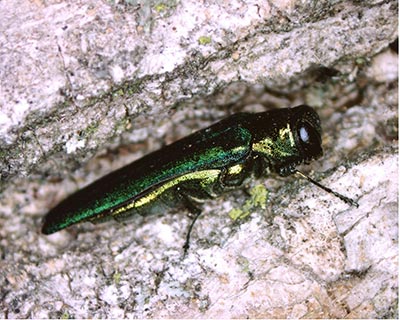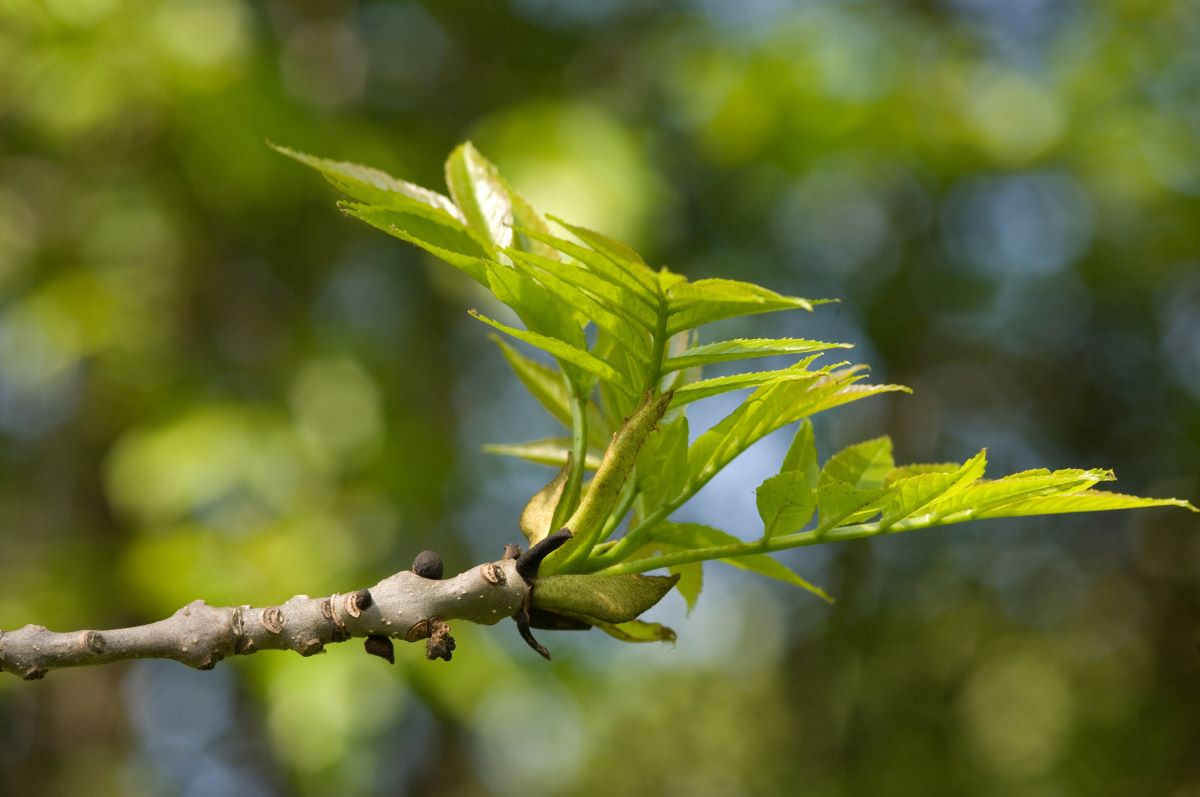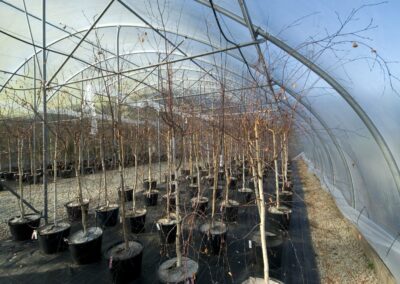Consolidating and curating datasets for ash genomics
Project lead Dr Laura Kelly | Royal Botanic Gardens, Kew
Lead organisation Forest Research
Collaborator University of Kentucky
Project status Pilot year project complete
Project funding £96,000
Research outcome Adaptation
Context
Ash dieback (Hymenoscyphus fraxineus) is predicted to cost the UK £15 billion, and further devastation may occur if the emerald ash borer (Agrilus planipennis) were to be introduced to the UK. Kew have undertaken substantial research on ash genomics and discovered genetic variation that can give resistance to these threats.
Research aims and objectives
Aim
Consolidate our existing datasets and make sure we get full value from them.
Objectives:
- Complete the analysis of a dataset we have in-hand from a pilot woodland in Surrey, looking for loci associated with resistance to ash dieback, and the ongoing effects of natural selection for ash dieback resistance.
- Re-annotate new ash genome reference sequences in collaboration with the University of Kentucky and using this to seek more genes associated with resistance to emerald ash borer.
- Re-analyse previous ash dieback genome wide association study (GWAS) datasets using the new reference assemblies, to more fully understand the basis for ash dieback resistance.
- Further analyse the evolution of the genus Fraxinus using new genome assemblies.
- Enhance the accessibility of this data for the use of other groups.
Expected outcomes
- A scientific paper on natural selection for ash dieback resistance in Marden Park Wood.
- New publicly available ash reference genome annotations and improved public access to ash genome data.
- A report on the distribution of ash dieback resistance markers in the ash genome.
Further resources linked to this project
Living Ash Project (2013-2024)
The Living Ash Project was a collaboration between the Future Trees Trust, Forest Research, and Royal Botanic Gardens, Kew that ran from 2013 to 2024.
The project aimed to identify a large and diverse number of ash trees with good tolerance to ash dieback (Hymenoscyphus fraxineus), to secure this material for further breeding work, and to quickly make this material available to industry. Selected trees were further screened for tolerance in two different ways, via chemical fingerprinting and directly through controlled inoculations.
Pilot Summary Report
Ash dieback is a highly destructive disease of ash trees, especially the European ash, one of the UK’s most common woodland trees. Caused by an invasive fungus (Hymenoscyphus fraxineus), ash dieback is predicted to cost the UK £7.6 billion by 2030.
The aim of this project was to uncover the genetic basis of resistance to ash dieback, which can be used to inform potential ash breeding programmes and, ultimately, assist the long-term survival of native ash populations.
CFP Phase 1 Project (2022-2025)
This research was built upon in CFP Phase 1 project: Transforming ash genomics: Creating a pangenome to understand ash dieback resistance.
CFP Phase 2 Project (Active)
The pilot and Phase 1 research is being built upon in CFP Phase 2 project: Investigating ash health genomics after long-term ash dieback exposure.

The emerald ash borer (Agrilus planipennis) is an invasive insect from Asia that targets ash trees.
Glossary & Key Terms
Ash (Fraxinus excelsior)
A native broadleaved tree with excellent timber properties that is an important host for many species of flora and fauna and consequently of high ecological value.
Ash is under severe threat from ash dieback disease (Hymenoscyphus fraxineus), and its abundance in the British landscape is likely to decrease. The ability to plant ash is now severely restricted due to concerns over tree health. Ash is categorised as a principal tree species. For more information, see Ash (AH) – Forest Research.
Ash dieback (Hymenoscyphus fraxineus)
Ash dieback is a highly destructive disease of ash trees (Fraxinus species), especially the United Kingdom’s native ash species, common ash (Fraxinus excelsior). It is caused by a fungus named Hymenoscyphus fraxineus (H. fraxineus), which is of eastern Asian origin. For more information, see Ash dieback (Hymenoscyphus fraxineus) – Forest Research.
Emerald ash borer (Agrilus planipennis)
Emerald ash borer (EAB) is an exotic beetle pest of ash trees (Fraxinus species). It is a member of the beetle family Buprestidae, and causes significant damage to the trees, including dieback and death. There have been no reported discoveries of the pest in the United Kingdom (UK), but agencies remain vigilant for an accidental introduction. For more information, see Emerald ash borer beetle (Agrilus planipennis) – Forest Research.
Fraxinus (genus)
A group of tree species commonly known as ash trees, which includes over 40 species distributed across Europe, Asia, and North America.
Genome assemblies
The process and result of reconstructing the complete DNA sequence of a tree from fragmented sequencing data. These assemblies are essential for understanding the genetic makeup of different tree species and identifying traits like resistance to disease.
Genome reference sequences
Comprehensive representations of the DNA sequence from a single tree. These sequences serve as a template or baseline for comparing the genomes of other individuals within the species.
Genome-wide association studies (GWAS)
A research method used to identify specific regions of a genome, called loci, which are statistically associated with traits such as resistance to disease.
Genomics
The study of an organism’s complete set of DNA, including all of its genes, and how that DNA interacts within the organism and with its environment.
Loci
Specific, identifiable positions or regions on a tree’s DNA where genetic variants occur. These loci are important because they can be associated with traits such as resistance or susceptibility to disease.
Reference assemblies
Carefully constructed representations of the complete DNA sequence of a single tree. These assemblies serve as a genetic blueprint for the species and are used as a standard for comparing the genomes of other individuals.
Share this project on social media
Related Projects
Our Partners
Social media
Explore
Newsletter
Contact
© 2022 Centre for Forest Protection. All rights reserved.


